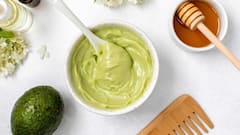World Coconut Day: Here Are 10 Surprising Facts About The Versatile ‘Kalpavriksha’
September 2 is observed as World Coconut Day every year in several countries of the Asia-Pacific region, including India

New Delhi: Be it the chutney from Udupi and the Bengali ‘narkel naru’ from India, or Thai curry and the exotic pina colada from the world, coconut is common to all and some cuisines are just incomplete without this popular fruit from the palm family.
For all coconut-growing countries in the world, September 2 is a special day. It’s ‘World Coconut Day’, observed every year in several countries of the Asia-Pacific region.
The day commemorates the formation of Asian Pacific Coconut Community, which has its headquarters in the Indonesian capital of Jakarta. India and all other major coconut growing countries are members of this committee.
The coconut fruit, its oil and its milk make up the ingredients for many food recipes across the world, and it is known as one of the most healthy foods.
The fruit has many non-edible uses also. Leaves of the coconut tree are used to make household items such as brooms, baskets, mats, and also decorative items. Its coir is a natural elastic fibre used to make ropes, strings, and stuffing for mattresses.
Coconut is a prime ingredient in various cosmetic products too, and its shell and husk are used as fuel as they are a good source of charcoal.
On World Coconut Day, let’s tell you 10 lesser known facts about this versatile crop.
1. Coconut is not a nut, but a one-seeded drupe. All drupe items — mangoes, cherries and cashews for example — have a fleshy outer around a pit.
2. Coconuts are said to have originated somewhere in the Indo-Malaya belt and it gets its name from the Portuguese word, ‘coco’, which means head or skull — thanks to the face-like image of the shell with the three holes.
3. The botanical name of the coconut tree is Cocos nucifera, and they can grow up to 82 feet or 25 metres high.
4. A single tree can annually yield 60-180 coconuts, with each fruit requiring a year to fully ripen. And each tree, fully blossomed, can produce coconuts up to 13 times a year.
5. Coconuts can easily float in water.
6. India, Indonesia and the Philippines are the largest producers of coconuts in the world.
7. People in many parts of the world, especially in India, burn the husk of coconuts that acts as a natural mosquito repellent.
8. During World War II, when medical supplies were short, coconut water was used to treat dehydration, according to some accounts, though the claim stands disputed.
9. The coconut tree is also known as a ‘kalpavriksha’, the Sanskrit word for the ‘tree of heaven’ because it gives everything that is necessary for living. As stated above, nearly all parts of the coconut tree can be used.
10. It is believed that the consumption of coconut milk and other foods derived from coconut may help protect the body from infections and viruses.
*Source: Britannica.com, BBCGoodFood
Trending News
Top Headlines








































